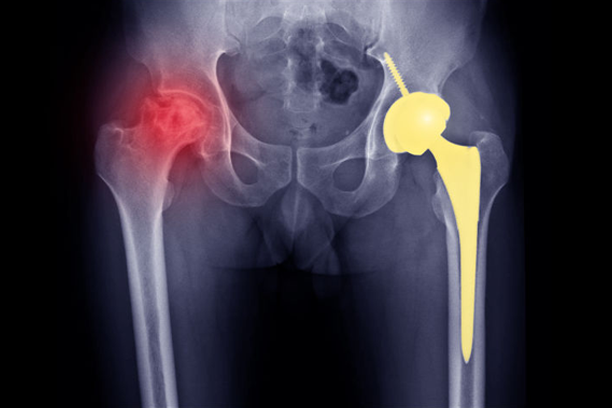What Is Avascular Necrosis?
The destruction of bone tissue as a result of a lack of blood supply is known as avascular necrosis (AVN). It may also be referred to as ischemic bone necrosis, aseptic necrosis, or osteonecrosis.
If AVN is not treated, the bone may collapse. Your hip is where AVN typically manifests. The shoulder, knees, and ankles are further potential locations.
Symptoms of Avascular Necrosis
AVN typically has no symptoms in the early stages. Pain increases as the illness worsens. At initially, pressing on the damaged bone can be the only thing that hurts. The pain could then become ongoing. You can have excruciating pain that prevents you from moving your joint if the bone and surrounding joint collapse. Separating the onset of symptoms and bone collapse, there might be several months to more than a year between them.
Causes and Risk Factors for Avascular Necrosis
Things that can increase the likelihood of avascular necrosis include:
- Alcohol: Drinking frequently might result in blood fat deposits, which reduce the blood flow to your bones.
- Bisphosphonates: These bone-density-increasing drugs run the risk of causing jaw osteonecrosis. If you’re taking them for multiple myeloma or metastatic breast cancer, this might be more likely.
- Medical treatments: Cancer radiation therapy may weaken bones. Organ transplants, such as kidney transplants, are another condition associated with AVN.
- Steroid drugs: 35% of all occurrences of nontraumatic AVN are brought on by long-term use of these anti-inflammatory medications, whether taken orally or intravenously. Long-term usage of drugs like prednisone can result in AVN, but doctors are unsure of why. They believe the medications may cause a rise in blood fat levels, which would reduce blood flow.
- Trauma: A broken or dislocated hip might harm the blood vessels in the area, which can reduce the blood flow to your bones. 20% or more of persons with hip dislocations may also have AVN.
- Artery damage, inflammation, and blood clots: These can all prevent blood from getting to your bones.
Other conditions associated with nontraumatic AVN include:
- Decompression illness, which results in blood gas bubbles
- Diabetes
- Gaucher disease, which causes a buildup of fatty material in the organs
- HIV
- Using bisphosphonate medications for a prolonged period of time to treat diseases such multiple myeloma or breast cancer, which can result in AVN of the jaw.
- Pancreatitis, inflammation of the pancreas
- Radiation therapy or chemotherapy
- Autoimmune diseases such as arthritis lupusus
- Sickle cell diseaselupusus
- Sickle cell disease


One Comment
Pingback: Avascular Necrosis (AVN or Osteonecrosis): Causes and Symptoms – Sujata Birla Hospital